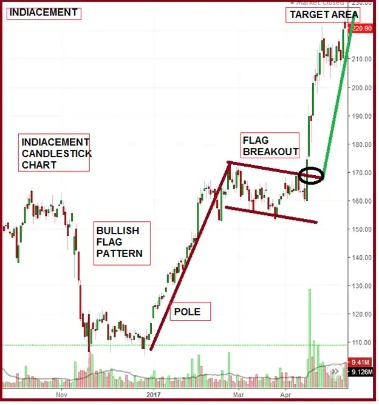Contents:

The dragonfly doji candlestick pattern is a sporadically occurring pattern on the price charts of stocks, ETFs and stock market indexes. The formation of a dragonfly doji candle indicates a potential reversal of the ongoing trend of the prices. For instance, if the dragonfly doji is formed when the price is in downtrend, then the price may start to move up after the formation of dragonfly doji. The dragonfly represents a state of indecision about the future direction of the price movement of the security, which mostly leads to the trend getting reversed.

Then the price will close at the opening price making it a Doji candlestick. A Doji candlestick is an indication of equal forces of buyers and sellers in the market. Here’s a typical bullish pin bar with the open and close of the candle marked with two blue lines.
Gravestone Doji & Example
Whatever type of https://g-markets.net/ you encounter in the markets usually means that the sentiment is mixed. Neither the bulls nor the bears had the upper hand by the end of the session, despite any price action. To be valid, confirmation candlesticks must be accompanied by strong volumes.
Most of the technical indicators or patterns are indicative of reversal patterns.Hence they are neither bullish nor bearish. Also usually traders even if the pattern appears will wait for the next day to verify. Of course, it occurs very rarely but price reversal happens constantly. Thus, this candlestick is not considered a good indicator for reversal patterns. They create orders immediately after the trend of confirmed by the next candlestick.
After an upward trend, a dragonfly doji indicates a potential price drop, which can be confirmed if the following candlestick moves down. A Dragonfly Doji signals that the price opened at the high of the session. There was a great decline during the session, and then the price closed at the high of the session. The result is that the open, high, and close are all the same price. The problem with dragonfly and gravestone doji candles is there is no candle body, which makes it impossible for the candle to actually close into the body of the previous candle. A lot of technical analysis patterns are limited by the biggest challenge, which is you can discover only after the event has occurred.
As you can see the price was in a minor downtrend when the price opened sharply lower and then ended the day close to where it opened. It leads to the body of dragonfly doji to be located somewhere at the top side of the candle which makes it appear like the dragonfly creature . Doji patterns indicate a transition in prices or that the market is undecided about the direction prices will take. As a category, they are best described as a transitional pattern rather than a reversal or continuation pattern.
And the gravestone Doji, which is one of the three popular Doji patterns. Lawrence Pines is a Princeton University graduate with more than 25 years of experience as an equity and foreign exchange options trader for multinational banks and proprietary trading groups. Mr. Pines has traded on the NYSE, CBOE and Pacific Stock Exchange. In 2011, Mr. Pines started his own consulting firm through which he advises law firms and investment professionals on issues related to trading, and derivatives. Lawrence has served as an expert witness in a number of high profile trials in US Federal and international courts. The technical storage or access is required to create user profiles to send advertising, or to track the user on a website or across several websites for similar marketing purposes.
- So, in this case, the market came up higher into the area of resistance which is simply the highs of the Long-legged Doji.
- The appearance of a dragonfly doji after a price advance warns of a potential price decline.
- On top of that the other challenge, is that this pattern rarely occurs and even if it occurs it needs to occur with larger volumes.
- Dragonfly doji means that sellers had the full control during the initial phase when the price opened and they took the price down to the lowest level.
- Traders need to use other technical indicators or patterns to identify the proper time for an exit.
It could have different types of bodies, but again it still shows you rejection of higher prices. Alright, you can see that it opens and closes at the same level. As a swing trader, you can look to take profit at the nearest swing high or at resistance area. The next thing in the market is that it rallied higher back into the swing high and into the area of resistance. And the market closes slightly higher which is a variation of the Dragonfly Doji. Notice that the price came into the area of support, rejection of lower prices.
How do you trade dragonfly doji?
It’s a Japanese candlestick pattern mostly known to day trading currency traders. It is repeated quite often on financial charts, so it is possible to see a trading signal and an investment opportunity. This is particularly true when there is a high trading volume following an extended move in either direction. As mentioned earlier, the most reliable dragonfly doji signals occur after a period of bearish momentum. This is because this is a bullish reversal pattern and MUST have a preceding bearish trend to reverse. Dragonfly Doji ExampleThe dragonfly doji indicates indecision between buyers and sellers and a potential trend reversal.
Alone, doji are neutral patterns that are also featuredin a number of important patterns. A doji candlestick forms when a security’s open and close are virtually equal for the given time period and generally signals areversalpattern fortechnical analysts. The daily chart shows a dragonfly doji at the end of an uptrend. The long lower shadow would suggest a bullish move according to some authors on candlesticks. However, when the opening and closing prices match, it speaks of indecision.

78.17% of retail investor accounts lose money when trading CFDs with this provider. You should consider whether you understand how CFDs work and whether you can afford to take the high risk of losing your money. 76% of retail investor accounts lose money when trading CFDs with this provider. Traders typically enter trades during or shortly after the confirmation candle completes. If entering long on a bullish reversal, a stop loss can be placed below the low of the dragonfly. If enter short after a bearish reversal, a stop loss can be placed above the high of the dragonfly.
What is the opposite of a dragonfly doji?
Specific types of Doji patterns – like the Dragonfly or the Gravestone – can signal a possible reversal in prices but are best used in conjunction with other indicators. Like all candlestick patterns, to trade the dragonfly doji is very straightforward. Counterattack lines are two-candle reversal patterns that appear on candlestick charts. Bullish Long Legged Doji has very long shadows on both the ends. The hammer candlestick is a bullish trading pattern that may indicate that a stock has reached its bottom and is positioned for trend reversal.
On the other hand, if the dragonfly doji has shown an upward trend previously and a formation might signal an upcoming decrease in the price of the security. The downward movement of the next candlestick will confirm the downward trend. A Candlestick is a price chart that depicts the Open, High, Low and Close of a particular security for a specific period. Candlesticks are vastly used to analyze price movement in Technical Analysis. The concept of Candlesticks was first developed in the 1700s by Munehisa Homma, a Japanese rice trader. He found a link between the price and supply and demand of rice and the emotions of the trader.
That is the key thing down here and you have to kind of anticipate that there are variations that could occur, especially in the FX markets. This is one way you can look to trade this Dragonfly Doji which is a variation, otherwise known as a hammer. First and foremost, you can trade a Dragonfly Doji at support. In this example, price breaks out downward and when that happens, the move can be a decent one.
It can be used with other indicators to identify a possible uptrend. The lack of a body on the candle is the reason why the books say pin bars have a higher chance of causing a reversal than dragonfly and gravestone doji candlesticks. It can be confirmed when a confirmation candle forms a reasonably long bullish body. The bullish body indicates that bulls have taken the full control and took the price higher where it closed. Price rejection from the support zone indicates that buyers are stronger than sellers and they will turn the bearish trend into bullish.
Is Doji a reversal pattern?
The risk of trading in securities markets can be substantial. You should carefully consider if engaging in such activity is suitable to your own financial situation. TRADEPRO Academy is not responsible for any liabilities arising as a result of your market involvement or individual trade activities. It formed this bearish engulfing pattern showing rejection of lower prices.
BofA Upgrades Union Pacific Following CEO Departure News – Union Pacific (NYSE:UNP) – Benzinga
BofA Upgrades Union Pacific Following CEO Departure News – Union Pacific (NYSE:UNP).
Posted: Mon, 27 Feb 2023 16:19:02 GMT [source]
The following S&P 500 SPDR ($SPY) chart shows several gravestone doji that were automatically identified using TrendSpider. In each case, the gravestone doji were followed by a bearish reversal, as the candlestick pattern would predict. These reversals could be confirmed with other indicators as well.
A Look Into Amgen’s Debt – Amgen (NASDAQ:AMGN) – Benzinga
A Look Into Amgen’s Debt – Amgen (NASDAQ:AMGN).
Posted: Sun, 26 Feb 2023 20:39:22 GMT [source]
But there is a difference between the shape of both candlesticks. Dragonfly Doji candlestick has the same opening and closing price while Hammer candlestick has the closing price slightly below/above the opening price of the candlestick. The head and shoulders patterns are statistically the most accurate of the price action patterns, reaching their projected target almost 85% of the time. The regular head and shoulders pattern is defined by two swing highs with a higher high between them. Dragonfly DojiQuite the opposite to gravestone doji, since the opening and closing are close to the high of the day.
In a bearish reversal trend, the confirmation candlestick must be a bullish candle whose close is very clearly higher than the closing price of the Doji Dragon. A bearish candle will be a signal to continue or break the trend. Doji is a category of technical indicator patterns that can be either bullish or bearish. The Dragonfly Doji is a bullish pattern that can indicate a reversal of a price downtrend and the start of an uptrend. Note that most traders will verify the possibility of an uptrend by waiting for confirmation the following day.
